“Injection molding is known for its efficiency in producing plastic components. This process comes with various costs, and understanding injection molding costs is crucial for any business involved in manufacturing.”
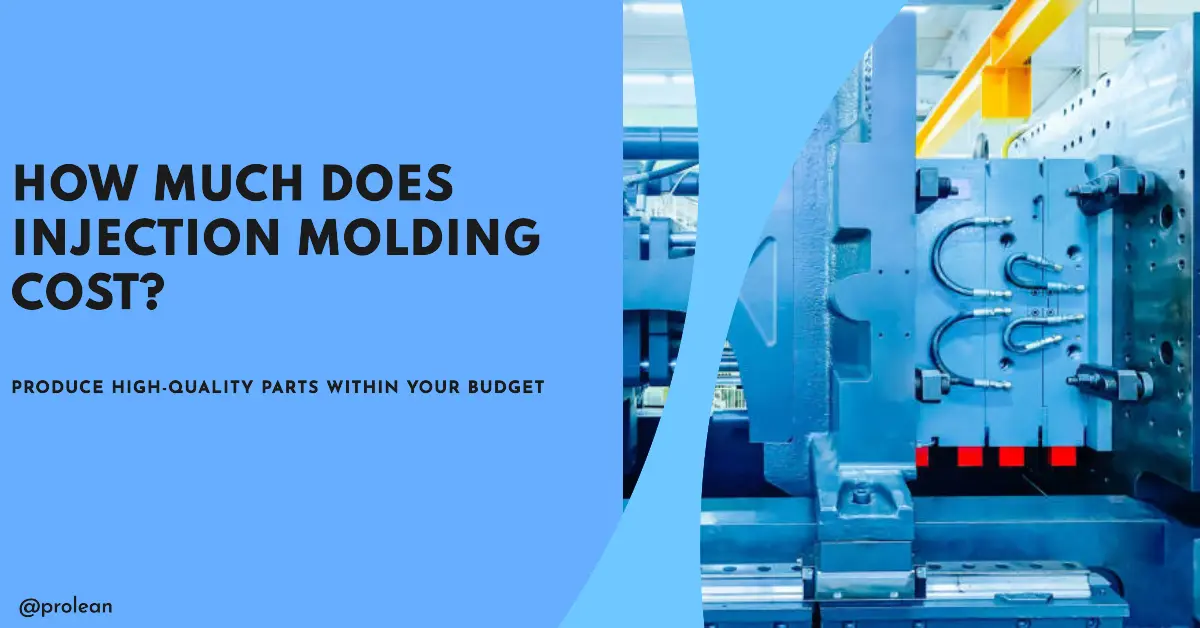 Injection molding offers precision and efficiency in mass-producing plastic parts. However, estimating the injection molding cost can be complex, as it involves various factors, from the price of materials to the design of the mold. This complexity arises due to the diverse nature of injection molding projects, each with unique specifications and requirements. Factors such as the type of plastic used, the part’s complexity, and the scale of production all play critical roles in determining the overall cost. Additionally, the cost also varies on mold design complexity and the production run duration.
Injection molding offers precision and efficiency in mass-producing plastic parts. However, estimating the injection molding cost can be complex, as it involves various factors, from the price of materials to the design of the mold. This complexity arises due to the diverse nature of injection molding projects, each with unique specifications and requirements. Factors such as the type of plastic used, the part’s complexity, and the scale of production all play critical roles in determining the overall cost. Additionally, the cost also varies on mold design complexity and the production run duration.
This comprehensive article aims to demystify the Injection Molding Cost, providing insights into the types of costs involved, such as injected material cost, injection mold cost, the overall expense of producing injection molded parts, and tips on Saving Money on Injection Molding.
Breaking Down the Types of Costs in Injection Molding
It is essential to see each aspect individually while separating the injection molding cost types. These costs range from direct expenses like plastic and additives to indirect costs like equipment maintenance and labor. Breaking down the cost gives a comprehensive idea of what drives the total expense and where savings could be made.
The following are the key aspects that determine the overall costs of any plastic Injection Molding project:
1. Injected material Cost (Plastics and additives)
The cost of plastics & materials in injection molding significantly impacts the total project budget. Various plastics are available, each with different properties and price points, influencing the cost. For instance, standard plastics like polyethylene are generally more affordable than specialized engineering plastics. However, the material choice must align with the product’s functional requirements and durability standards.
Furthermore, additives can dramatically alter plastic properties and material costs. Additives like flame retardants, UV stabilizers, or colorants increase the utility of the plastic, but also the expense.
2. Injection Mold Cost
The design and manufacturing of molds are among the most significant costs in injection molding. Complex designs requiring fine details and textures demand more time and precision in manufacturing, leading to higher costs. Additionally, the mold’s size and the number of cavities can significantly affect the price, as larger molds with more cavities require more material and intricate machining.
3. Tools and Set-up Cost
Injection molding may require specialized tools and equipment, especially for unique product designs, leading to higher setup costs. Frequent changes in mold designs can also escalate these costs due to the need for additional tooling and setup time. Efficiently planning production runs can minimize these expenses by reducing the frequency of setup changes.
4. Equipment Cost
The cost of injection molding equipment varies based on the machine’s capabilities, such as clamping force, platen size, and injection pressure. Higher-end machines with advanced features and larger capacities generally cost more. Regular maintenance and repairs also contribute to the ongoing equipment costs, impacting the overall financial investment in injection molding.
5. Labor Cost in Injection Molding
Labor costs in injection molding depend on the complexity of the operation and the skill level required. Operations involving complex molds or high-precision requirements may necessitate a more skilled workforce, leading to higher labor costs. Additionally, longer production runs will require more labor hours, contributing to the overall expense.
6. Inspection and Post-processing Cost
After molding, parts typically undergo inspection and additional processing like painting, surface texturing, or plating. These post-processing steps ensure the product meets quality standards and aesthetic requirements but add to the cost. Inspection processes can be labor-intensive and require specialized equipment, particularly for high-precision components.
7. Packaging & Shipping Cost
Packaging & shipping is the final step in injection molding and adds to the overall cost. The nature of the molded parts, their fragility, and their size dictate the type of packaging required. Furthermore, shipping costs are influenced by the weight, volume, and shipment destination.
Now, let’s discuss these breakdown aspects and how they influence the injection molding cost.
Injected Material Cost (Plastics & Additives)
The cost of injected materials, encompassing both plastics and additives, plays a pivotal role in the overall economics of injection molding. This cost involves the raw material price and requires considerations regarding its suitability for the intended application, its performance characteristics, and the impact of any additives used.
For instance, while some plastics may offer a lower per-unit cost, they might not possess the necessary strength, flexibility, or heat resistance required for specific applications. Conversely, high-performance polymers, though more costly, can provide essential attributes such as enhanced durability, chemical resistance, or specific electrical properties.
Selecting the right plastic for injection molding is a balance between cost and performance. The choice depends on factors such as the required strength, flexibility, thermal resistance, and visual aesthetics. Standard plastics like polyethylene and polypropylene are cost-effective, while specialized applications like polycarbonate or PEEK could be more costly.
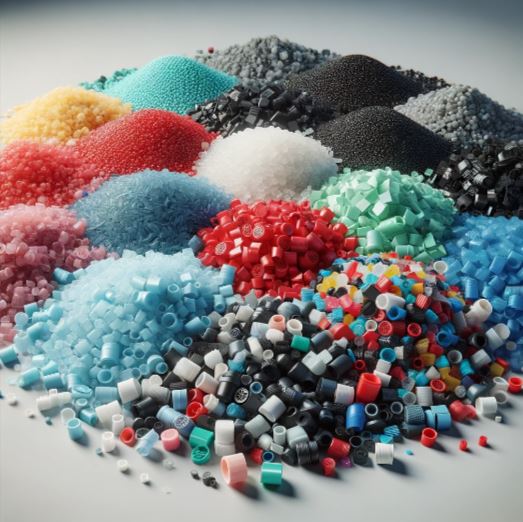
Various materials used in injection molding
The Role of Additives
Additives can significantly alter the properties of the plastic, but they also add to the material cost. For instance, UV stabilizers can increase the material’s resistance to sun exposure, colorants can enhance its appearance, and flame retardants can improve safety standards. Each additive must be carefully selected according to the product’s requirements without unnecessarily inflating costs.
Cost of Various Injection Molding Plastics and Additives
The table below provides an approximate cost overview of various injection molding plastics and additives.
Table: Approx. cost of Various Injected Material Costs
|
Material/Additive |
Average Cost Range per Kg ($) |
Applications |
|
Polyethylene (PE) |
2.20 – 5.50 |
Consumer goods, household items, packaging |
|
Polypropylene (PP) |
3.30 – 6.60 |
Automotive parts, containers, medical devices |
|
Acrylonitrile Butadiene Styrene (ABS) |
4.00 – 7.40 |
Electronics, automotive components, toys |
|
Polycarbonate (PC) |
5.50 – 9.90 |
Eyewear, electronic components, bulletproof glass |
|
Polyethylene Terephthalate (PET) |
3.70 – 6.60 |
Bottles, packaging, synthetic fibers |
|
Polyvinyl Chloride (PVC) |
3.00 – 5.50 |
Piping, medical devices, wire insulation |
|
Polyamide (Nylon) |
4.40 – 8.80 |
Gears, bearings, automotive parts |
|
Thermoplastic Polyurethane (TPU) |
5.50 – 11.00 |
Footwear, medical devices, automotive interiors |
|
Polyoxymethylene (POM) |
4.00 – 7.40 |
Mechanical gears, ski bindings, zippers |
|
Polylactic Acid (PLA) |
2.20 – 4.40 |
Biodegradable packaging, disposable tableware |
Finding the Balance Between Required Properties and Injected Material Cost
Achieving the optimal balance between the required properties of a product and the cost of injected materials is a critical challenge in injection molding. The goal is to select a material that meets the product specifications without unnecessarily inflating the budget.
Carefully considering the following factors ensures that the product meets quality standards, aligning with budget constraints.
- Assessing Material Properties: Evaluate the mechanical, thermal, and chemical properties needed for the product. Consider factors like strength, flexibility, heat resistance, and durability.
- Cost vs. Performance: Compare the costs of potential materials that meet the property requirements. Higher-performance materials generally come at a higher cost.
- Long-Term Durability: Opt for materials that offer long-term durability, potentially reducing the need for replacements and lowering overall costs in the long run.
- Production Volume: High-volume production can justify the higher cost of premium materials due to economies of scale.
- Customization Needs: Factor in any additional costs for custom colors or additives that meet specific product requirements.
- Supplier Relationships: Establish good relationships with suppliers to negotiate better prices or discover more cost-effective material alternatives.
Injection Molding Tools and Set-up Cost
Beyond the mold itself, several other tools and equipment are necessary for the successful execution of an injection molding project. When it comes to custom-made, these tools can significantly add to the cost.
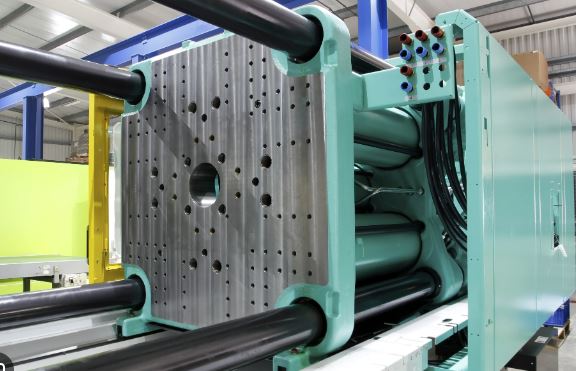
Injection molding tool setup
The range of tools required in injection molding extends from hand tools to more sophisticated, custom-designed equipment.
- Standard tools: Wrenches, cutters, screwdrivers, and more.
- Custom tools: Specialized jigs, fixtures, and gauges designed to hold, measure, or manipulate parts during and after the molding process.
- Auxiliary equipment: Dryers for material pre-processing, mixers for blending materials, and conveyors for moving parts between stages are integral to the process.
The Impact on Overall Cost
The initial investment in tools and setup can be substantial, particularly for custom projects. However, this cost needs to be amortized over the project’s lifetime. The per-unit cost impact may be minimal for large-scale productions. However, it can be significant for smaller runs. Therefore, it’s crucial to carefully plan and justify the tooling and setup costs relative to the project’s scale and duration.
The following factors affect tool and setup costs in plastic injection molding.
- Complexity of the Design: More intricate product designs often require more complex and, thus, expensive tooling.
- Custom Tooling Requirements: Custom tools, tailored for specific product needs, can significantly increase setup costs.
- Tool Material and Durability: The choice of material and the expected lifespan of the tools affect the cost. Durable, high-quality tools may have a higher upfront cost but can reduce long-term expenses due to less frequent replacement or maintenance.
- Size of the Production Run: Larger production runs might justify the expense of custom or more sophisticated tools due to economies of scale.
Try Prolean Now!
The Injection Mold Cost
The cost of an injection mold can be one of the most significant investments in the injection molding process. This expense is affected by several factors, including the mold’s design, manufacturing, and any post-processing requirements. Understanding these costs is vital for manufacturers to budget effectively and make strategic decisions.
1. Design Cost of Injection Mold
The design phase of an injection mold is critical and requires significant expertise. It involves creating a detailed blueprint of the mold, which will dictate the quality, functionality, and lifespan of the molded parts.
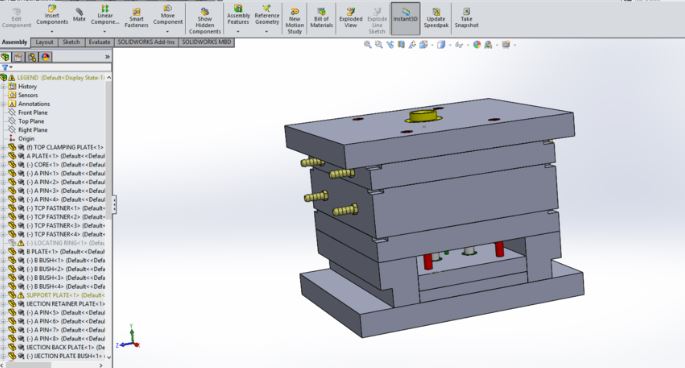
Example of injection mold CAD design
The complexity of the part being molded heavily influences the design cost. Simple designs with fewer undercuts and moving parts are generally less expensive to design than complex ones with intricate details.
- CAD/CAM Software: Advanced software is used for mold design, which can add to the cost.
- Expertise Required: Experienced mold designers command higher fees but can create more efficient and effective mold designs.
- Design Revisions: Iterative changes and optimizations in the design phase can also contribute to increased costs.
2. Mold Manufacturing Cost
Once the design is finalized, manufacturing the mold is the next significant cost factor. The manufacturing cost depends on the mold size, the material used, and the complexity of the design.
- Material Choice: Common materials for molds include hardened steel, pre-hardened steel, aluminum, and beryllium-copper alloys, each varying in cost and durability.
- Machining Time and Techniques: Complex molds require more time and advanced machining techniques, which can significantly increase costs.
- Number of Cavities: Molds with more cavities are more expensive but can produce more parts in each cycle, reducing the per-part cost.
3. Post-Processing Cost
After the mold is manufactured, it may require additional post-processing. This can include heat treatment to enhance durability, polishing to ensure smooth part release, or adding textures to the mold surface.
- Heat Treatment: This process can extend the mold’s life but adds to the overall cost.
- Surface Finishing: Polishing and texturing costs depend on the detail level required.
- Repairs and Modifications: Any necessary adjustments after initial testing can also add to the cost.
Injection Mold Cost Variables
The cost of an injection mold is not a fixed figure but fluctuates based on several key variables. Understanding these factors is crucial for manufacturers to make informed decisions and optimize their investments.
- Mold Size and Complexity: The mold size directly impacts the amount of material required, and larger molds are inherently more expensive. Additionally, complexity plays a significant role. Molds with intricate designs, multiple cavities, or advanced features such as undercuts or threads require more sophisticated manufacturing processes. The complexity not only extends the time required for manufacturing but also demands high precision and expertise.
- Tolerance Requirements: The precision with which a mold must be created influences its cost. Molds that require extremely tight tolerances demand advanced manufacturing techniques and more time for fine-tuning, which increases the expense. However, high-precision molds are essential for components that must meet strict dimensional requirements, often seen in the medical or aerospace industries.
- Production Volume: The intended production volume is critical in determining the appropriate mold investment. For large-scale production runs, a more durable and expensive mold can be more cost-effective over time.
- Mold Longevity: The expected lifespan of the mold is a critical consideration. Investing in a high-quality mold that can withstand numerous cycles without wear can reduce the need for frequent replacements or repairs. While the initial cost may be higher, the long-term benefits include uninterrupted production and lower maintenance costs, contributing to a more favorable cost-benefit analysis over the mold’s lifespan.
Different Mold Manufacturing Methods & Associated Costs
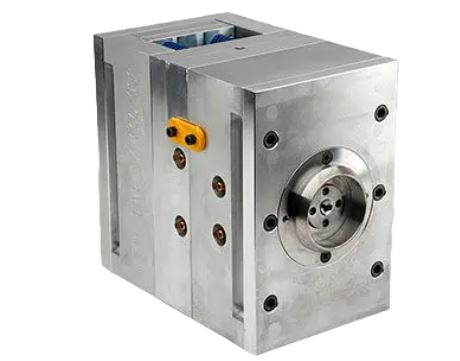
Injection mold
The injection mold can be created with various manufacturing methods, each with its cost implications. These methods range from CNC machining to modern 3D printing techniques, and the choice depends on the project’s specific requirements, such as complexity, precision, and budget constraints.
1. Mold Materials and Their Costs
The material used to make a mold is a primary factor in determining its cost. Common materials include:
- Steel: Often used for high-volume production due to its durability. Hardened steel molds have a higher upfront cost but are cost-effective for large-scale production due to their long lifespan.
- Aluminum: A cost-effective option for lower-volume production. Aluminum molds are less expensive than steel but have a shorter lifespan.
- Beryllium Copper: These are used in specific applications requiring rapid heat removal. It is more expensive than steel or aluminum but offers unique advantages in certain scenarios.
2. CNC Machining
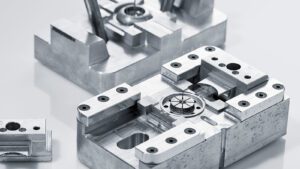
CNC machine creating injection mold
CNC machining is known for its precision and ability to produce complex molds. It involves subtractive manufacturing processes where material removal is involved to create the mold cavity.
- Cost Factors: The cost of CNC machining molds depends on the complexity of the mold design, the type of material used, and the machining time required. High-precision requirements and complex designs increase the cost.
- Suitability: Ideal for high-volume production molds due to its durability and precision.
3. Electrical Discharge Machining
EDM (also known as spark machining) uses electrical discharges to shape the mold. It is beneficial for creating intricate details and complex shapes.
- Cost Implications: EDM can be more expensive than traditional CNC machining due to the specialized equipment and slower processing time. However, it offers unmatched precision for complex molds.
- Application: Often used in conjunction with CNC machining to add fine details or to machine hard materials.
Read more: Electrical Discharge Machining: Types and Applications
4. 3D Printing
3D printing, or additive manufacturing, builds the mold layer by layer from a digital file. It has revolutionized mold making by significantly reducing the time and cost of producing mold prototypes.
- Cost Considerations: 3D printing is generally less expensive than CNC machining or EDM, especially for prototype molds or low-volume production. The cost savings come from reduced material waste and decreased labor requirements.
- Usage: Ideal for prototypes, low-volume production, or molds with less stringent tolerance requirements.
Each mold manufacturing method has its distinct cost structures and is suitable for different injection molding projects.
Read more: Mastering 3D Printing: A Guide to the Best PLA Materials
Table: Injection Mold Material Vs Manufacturing Methods
| Manufacturing Method | Cost (Relative) | Suitable Production Volume | Complexity Handling | Precision Level | Typical Application Scenario |
| CNC Machining | High | High | High | Very High | Large-scale production of complex automotive parts requiring tight tolerances. |
| Electrical Discharge Machining (EDM) | Moderate-High | Low to Medium | Very High | Very High | Manufacturing of intricate aerospace components with complex geometries. |
| 3D Printing | Low to Moderate | Low | Moderate | Moderate | Prototyping of consumer electronics parts or low-volume custom medical devices. |
| Aluminum Molds | Low to Moderate | Low to Medium | Moderate | High | Short-run manufacturing of promotional plastic items or initial test runs for product validation. |
| Steel Molds | High | High | High | Very High | Mass production of durable goods such as plastic housings for industrial equipment. |
| Beryllium Copper Molds | Very High | Medium to High | High | High | Special applications such as high-speed injection molding where rapid heat dissipation is critical. |
Read more: Why is CNC Machining Better than Injection Molding for Thermoplastic Prototyping?
Injection Molding Equipment Cost
In injection molding, equipment costs significantly influence the overall budget of a project. Understanding these costs is crucial since they encompass a broad range of machinery and technology necessary for efficient and quality production.
1. Injection Molding Machines
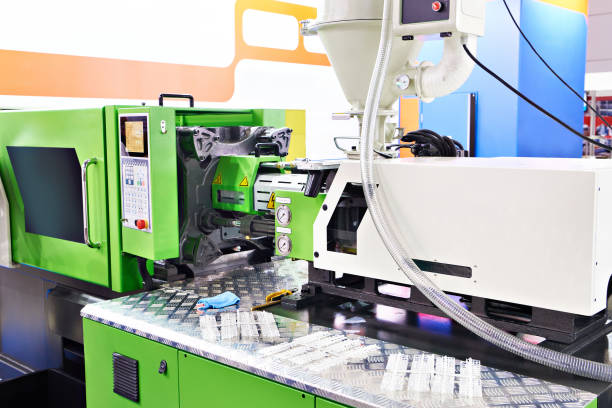
Injection molding machine
At the core of the injection molding process are the injection molding machines. These machines, pivotal in shaping the final product, vary in cost based on several factors. The size of the machine, directly correlating to the part size it can produce, is a primary cost determinant. For example, Larger machines, equipped for bigger parts or molds, naturally carry a higher price tag.
Additionally, the clamping force, measured in tons, influences the machine’s cost, with higher-force machines necessary for larger or complex parts, being more expensive. Advanced features like energy efficiency and faster cycle times also add to the machine’s cost, enhancing its operational efficiency but at a higher initial investment.
2. Temperature Controllers and Chillers
Maintaining optimal temperature is critical for quality control in injection molding. Temperature controllers and chillers ensure the mold and machine operate at the correct temperature. The cost of these systems varies with their precision and capacity, with more advanced systems demanding a higher investment but offering better control and efficiency.
3. Robotics and Automation Equipment
Modern injection molding increasingly relies on robotics and automation to enhance efficiency and reduce manual labor. Robotic arms, used for various tasks like part removal and in-mold operations, vary in cost based on their complexity and payload capacity. Automated conveyor systems, essential for moving parts between production stages, also contribute to the cost, influenced by their size and complexity.
4. Auxiliary Equipment
Beyond the main molding machine, auxiliary equipment is integral to the setup. Material dryers and hoppers, for instance, are essential for preparing the plastic for molding, especially for materials sensitive to moisture. The cost of these units varies based on their capacity and sophistication.

Custom hopper for injection molding
In operations where material blending is necessary, mixers and blenders are crucial, adding to the cost based on their functionality and capacity. Furthermore, equipment like granulators and recycling units, though adding to the upfront cost, provide long-term savings by facilitating material reuse and waste minimization.
5. Quality Control and Inspection Equipment
Finally, investment in quality control and inspection equipment, such as 3D scanners and coordinate measuring machines (CMMs), is crucial. While representing an additional cost, these tools are vital for maintaining high quality and avoiding costly errors or recalls.
Try Prolean Now!
Labor Cost in Injection Molding
Labor costs in injection molding play a significant role in the overall expense of manufacturing. This cost is influenced not just by the hourly wages of the workers but also by the complexity of the operation, the efficiency of the process, and the level of expertise required.
The intricacy of the parts being molded and the sophistication of the machinery used directly impact the labor costs. Higher complexity and advanced machinery necessitate skilled technicians and operators, leading to higher labor expenses.
Labor Cost Breakdown in Injection Molding
The following table shows various aspects contributing to labor costs in injection molding.
Table: Breakdown of Labor Cost in Injection Molding. Source
| Aspect | Description | Impact on Labor Cost |
| Machine Operation | Skilled labor is required to operate injection molding machines. | Higher skill level increases labor costs. |
| Setup and Calibration | Time and expertise needed to set up machines for production runs. | More complex setups can increase labor costs. |
| Quality Control | Labor is involved in ensuring each part meets quality standards. | Intensive quality control can raise costs. |
| Maintenance and Repairs | Regular maintenance and repairs of machines to ensure smooth operation. | Preventive maintenance can reduce long-term labor costs. |
| Post-Processing | Additional work such as trimming, painting, or assembly. | Additional post-processing steps increase labor requirements. |
| Material Handling | Tasks related to managing and preparing raw materials for production. | Efficient material handling can reduce labor costs. |
| Supervision and Management | Oversight of the injection molding process and workforce. | Effective management can optimize labor efficiency. |
Labor Cost in China vs Other Areas
Labor cost in injection molding varies significantly across different regions, with China being more cost-effective than other areas. This variation is due to differences in wage structures, labor laws, and the cost of living in each region.
Table: Injection Molding Labor Cost in China Vs Other Regions
| Region | Approximate Labor Cost ($/hour) |
| China | $3 – $6 |
| United States | $15 – $30 |
| Western Europe | $20 – $40 |
| Eastern Europe | $6 – $15 |
| Southeast Asia | $4 – $6 |
| India | $3.5 – $8 |
Inspection and Post-processing Cost in Injection Molding
Inspection and post-processing are critical stages in injection molding, significantly impacting the overall cost. The meticulous inspection ensures that each part meets stringent quality standards, while post-processing adds the final touches to the product. While essential for ensuring high-quality outputs, these steps add additional layers of expense to the manufacturing process.
The cost of inspection and post-processing varies based on the complexity of the parts, the precision required, and the type of finishing processes involved. Advanced inspection techniques, like 3D scanning, and elaborate post-processing methods, such as painting or chrome plating, can substantially increase costs. Efficient management of these stages is crucial for maintaining cost-effectiveness without compromising on quality.
- Quality Control Measures: The adoption of advanced quality control measures, such as coordinate measuring machines (CMM) and visual inspection systems, can be costly but critical for ensuring part quality.
- Specialized Inspection Equipment: Investment in specialized inspection equipment, while increasing initial costs, can lead to long-term savings through reduced rejection rates and improved product quality.
- Surface Finishing Processes: Processes like painting, plating, or polishing, necessary for aesthetic or functional reasons, add to the post-processing costs.
- Labor for Post-Processing: Manual labor required for finishing operations, especially for intricate designs, adds to the overall expense.
- Environmental Compliance: Compliance with environmental regulations, especially for processes like plating or painting, can lead to additional costs.
- Assembly and Secondary Operations: Additional costs are incurred if parts require assembly or secondary operations post-molding.
- Packaging for Quality Assurance: Specialized packaging to maintain part quality during transportation can also contribute to post-processing costs.
Packaging and shipping costs in Injection Molding
In injection molding, the final stages of packaging and shipping are pivotal, often incurring substantial costs. The choice of packaging materials and shipping method depends on the fragility, size, and weight of the molded parts. This phase ensures the safe delivery of parts to customers but adds a notable expense to the overall process.
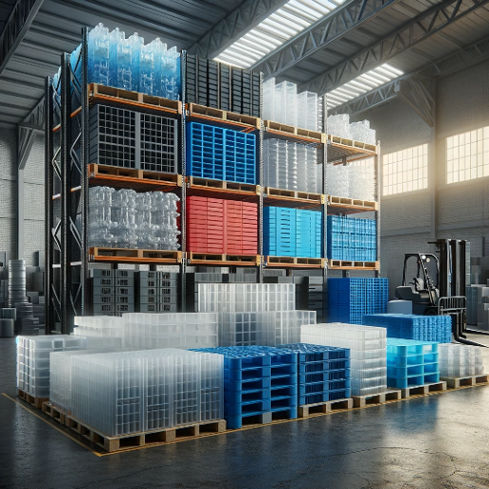
Inspected molded parts in a warehouse
The cost of packaging is influenced by the need for specialized materials or containers, especially for delicate or high-precision parts. Customized packaging solutions, while providing optimal protection, can significantly increase the cost. Bulkier or heavier parts also require sturdier packaging materials, further escalating expenses.
Shipping costs vary widely, influenced by factors like distance, delivery speed, and the volume of goods being shipped. Due to customs duties and longer transit times, international shipping can be particularly costly. For large-scale or continuous shipments, negotiating long-term contracts with logistics providers can save costs.
Injection Molding Parts Cost Analysis
A thorough analysis of per-part manufacturing expenses is essential to calculate the Injection Molding Parts Cost accurately. This calculation comprehensively considers material costs, labor expenses, and overheads, each contributing to the final cost per unit.
Table: Estimation Example of Injection Molding Part Cost
| Criteria | Estimated Cost Range Per Part ($) |
| Injected Material Cost (Plastics and Additives) | 0.10 – 2.00 |
| Injection Mold Cost | 0.50 – 5.00 |
| Tools and Set-up Cost | 0.20 – 1.00 |
| Equipment Cost | 0.15 – 0.75 |
| Labor Cost in Injection Molding | 0.25 – 1.50 |
| Inspection and Post-processing Cost | 0.10 – 0.50 |
| Packaging & Shipping Cost | 0.05 – 0.30 |
| Total Estimated Cost Per Part | 1.35 – 11.05 |
Saving Money in Injection Molding
In the competitive domain of manufacturing, finding ways to reduce costs in injection molding is crucial for maintaining profitability. While maintaining quality, manufacturers can implement several strategies to cut expenses and optimize their processes. It involves an examination of each stage of the molding process, from design to final production,
Cost-saving in injection molding is not just about cutting corners; it’s about smart manufacturing. It requires a strategic approach to utilize resources efficiently, optimize production cycles, and minimize waste. By identifying critical areas for cost reduction, injection molding companies can significantly lower their overall expenses while still producing high-quality products.
- Optimize Part Design: Simplifying the part’s design can lead to significant savings. Consider reducing unnecessary complexities that require more expensive tooling or longer cycle times.
- Material Selection: Choose the most cost-effective material that still meets the requirements of the product. Sometimes, less expensive alternatives can provide similar performance.
- Utilize Efficient Molding Techniques: Techniques like family molds, where multiple parts are molded simultaneously, can reduce costs.
- Minimize Material Waste: Implementing recycling practices for excess material and using regrind can lower material costs.
- Energy-Efficient Machinery: Investing in energy-efficient injection molding machines can reduce operational costs over time.
- Automation: Introducing automation in certain stages of the process can cut labor costs and improve efficiency.
- Preventive Maintenance: Regular maintenance of equipment prevents costly breakdowns and production delays.
- Optimize Cycle Time: Reducing cycle times without compromising quality can increase output and reduce labor and energy costs.
- Reduce Labor Costs: Streamlining operations and training staff to multitask can help reduce labor expenses.
- Bulk Purchasing of Materials: Purchasing materials in bulk often comes with discounts, reducing the per-unit cost.
- Effective Quality Control: Implementing rigorous quality control measures can prevent costly reworks or rejects.
- Outsource Non-Core Activities: Outsourcing tasks like post-processing or assembly can be more cost-effective than doing them in-house.
- Negotiate with Suppliers: Building strong relationships with suppliers can lead to better pricing for materials and tooling.
- Evaluate Shipping and Handling Costs: Optimizing packing and shipping strategies can reduce expenses in the final stages of production.
Balance of Precision and Cost in Injection Molding at Prolean
At Prolean, striking the perfect balance between precision and cost in injection molding is the foundation of our approach. We understand that maintaining high-quality standards while managing costs is crucial for our clients. We focus on delivering precise, high-quality injection molded parts that align with budgetary constraints.
We achieve this balance by leveraging advanced technologies and efficient production methodologies. Our team of experts utilizes state-of-the-art injection molding machines and employs rigorous quality control measures. This ensures that every part we produce meets stringent precision requirements, minimizing the need for costly reworks or material waste.
Prolean’s injection molding services strategy involves continuous optimization and cost analysis. By regularly evaluating our production methods and material usage, we identify areas for cost reduction without compromising precision. Our commitment to innovation and efficiency allows us to provide our clients with cost-effective injection molding solutions that do not sacrifice the quality or accuracy of the final product.
Summing Up
Navigating the multifaceted costs of injection molding is critical to manufacturing success. Our exploration of the various cost components, from mold manufacturing to material selection, highlights the complexity of managing expenses in injection molding. The mold itself emerges as a significant investment, with its design and manufacturing costs influenced by complexity and size. Material selection, balancing cost and performance, is equally vital in determining the overall expense.
Efficient use of equipment and labor also plays a crucial role in cost management.
In conclusion, a comprehensive understanding of injection molding costs is crucial for efficient and economical manufacturing. Manufacturers can enhance production efficiency by meticulously analyzing each cost element and implementing smart, cost-saving strategies, ensuring high-quality outputs that align with budgetary requirements.
Read More:
- Injection Molding Plastic: Thermoplastic vs. Thermoset
- Injection Molding Gate: Expert Insights on Design & Manufacturing
FAQs
What are the main factors that affect Injection Molding Cost?
The main factors include material costs, mold design and production costs, and operational expenses.
How can I reduce the Injection Mold Cost?
Opt for simpler mold designs, use cost-effective materials, and maximize the mold’s lifespan.
What impacts the cost of injected materials in injection molding?
The type of material, its availability, and specific properties such as durability and heat resistance impact the cost of injected materials.
Can the complexity of a part design affect Injection Molding Costs?
Yes, more complex designs often require more intricate molds, increasing the cost.
Is it possible to estimate Injection Molding Costs accurately?
Accurate estimation is possible considering all variables, including production volume and part complexity.
What strategies can be employed to save money in injection molding?
Implement design optimizations, select economical materials, and streamline the manufacturing process.

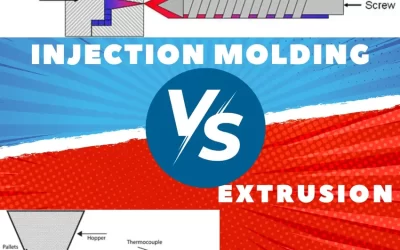
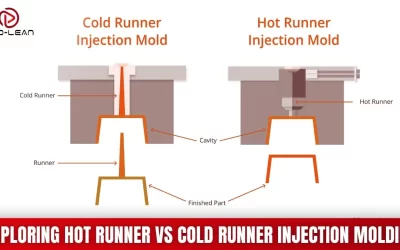
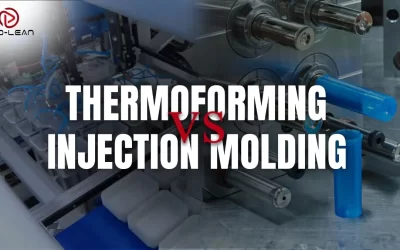
It is obvious that mold manufacturing cost is most significant factor in injection molding cost. Do you think, I can reduce per unit cost by importing molds from china and manufacturing the plastic parts here in Nigeria.
Yes, the cost per unit will drop due to low cost molds from china. And you can use your local resource, material, and workforce for further cost-effectiveness
Mold and tooling takes all the cash! Trust me